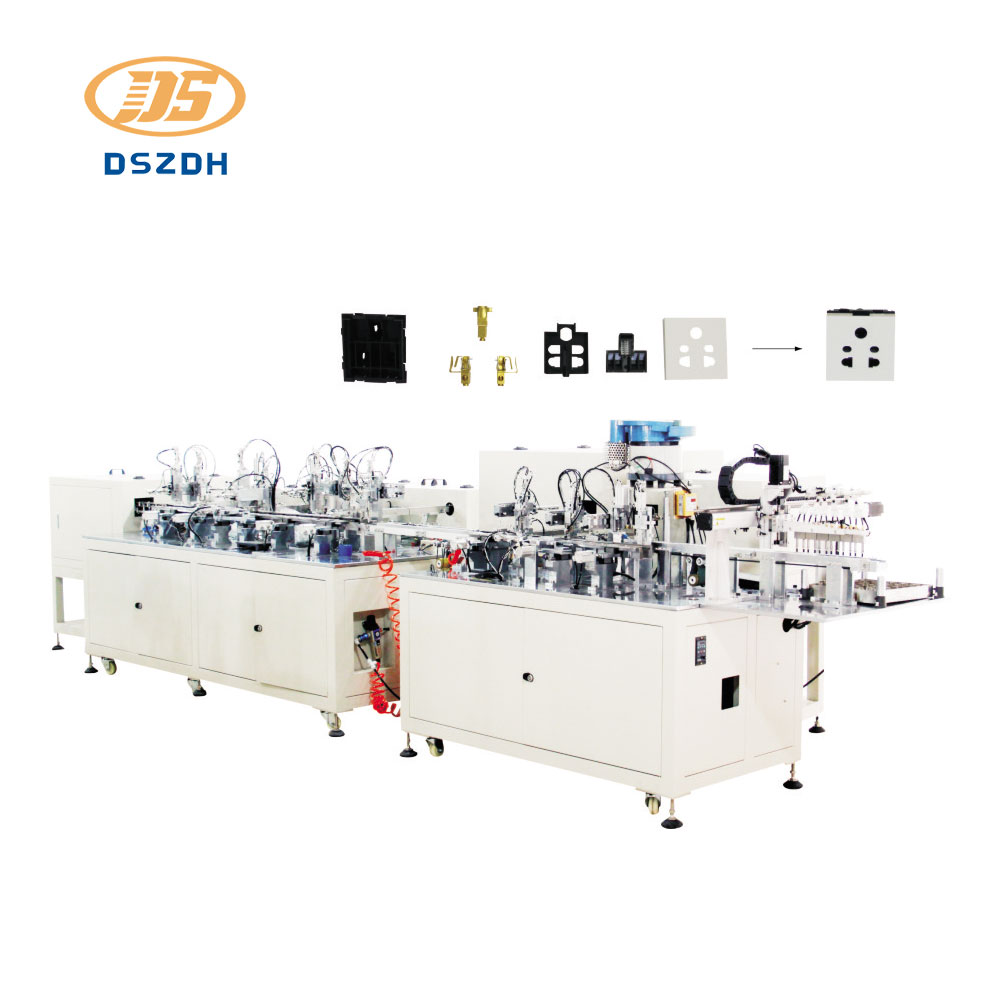Ensuring Safety: Design and Operation of Three Hole Socket Automatic Assembly Machines
2024-04-03
In the bustling environment of manufacturing, safety is paramount. As industries strive for efficiency and productivity, it's crucial to prioritize the well-being of workers and minimize the risk of accidents. In the realm of Three Hole Socket Automatic Assembly Machines, robust safety measures are implemented to safeguard operators and maintain a secure working environment. Let's explore the safety features integrated into the design and operation of these machines.
1. Protective Enclosures: Three Hole Socket Automatic Assembly Machines are often equipped with protective enclosures or barriers that surround the assembly area. These enclosures prevent access to moving parts, components, and machinery, reducing the risk of accidental contact or injury. Transparent panels or interlocking doors allow operators to observe the assembly process while maintaining a safe distance from hazardous areas.
2. Emergency Stop Buttons: Emergency stop buttons are strategically located on Three Hole Socket Automatic Assembly Machines to provide operators with a quick and accessible means of halting operation in case of emergency. Pressing the emergency stop button immediately disables the machine's power source and brings all moving parts to a safe stop, preventing potential accidents or injuries.
3. Safety Interlocks: Safety interlocks are mechanisms that ensure certain conditions are met before the machine can operate safely. For example, access doors or panels may be equipped with interlock switches that prevent the machine from starting if the doors are open. Safety interlocks help prevent unauthorized access to hazardous areas and minimize the risk of accidents during operation.
4. Light Curtains: Light curtains are optical safety devices that create an invisible barrier around hazardous areas of the machine. If an object or operator interrupts the light curtain, the machine automatically stops or enters a safe mode to prevent potential collisions or injuries. Light curtains are commonly used in conjunction with protective enclosures to provide an additional layer of safety.
5. Safety Mats: Safety mats are pressure-sensitive mats placed on the floor near the machine's operating area. If an operator steps on or applies pressure to the safety mat, the machine is immediately halted, ensuring the safety of the operator. Safety mats are especially useful in areas where operators may need to access the machine's operating area during operation.
6. Risk Assessment: Prior to the deployment of a Three Hole Socket Automatic Assembly Machine, a comprehensive risk assessment is conducted to identify potential hazards and implement appropriate safety measures. This may include analyzing machine components, workflow processes, and operator interactions to mitigate risks and ensure compliance with safety regulations and standards.
7. Operator Training: Proper training is essential for ensuring the safe operation of Three Hole Socket Automatic Assembly Machines. Operators are trained on how to safely operate the machine, including how to use emergency stop buttons, navigate safety interlocks, and respond to potential hazards. Regular refresher training sessions are conducted to reinforce safety protocols and procedures.
8. Safety Signage and Labels: Clear and conspicuous signage and labels are placed on Three Hole Socket Automatic Assembly Machines to communicate important safety information to operators. This may include warning labels indicating hazardous areas, instructions for emergency procedures, and reminders to wear personal protective equipment (PPE) such as safety glasses or gloves.
In conclusion, Three Hole Socket Automatic Assembly Machines are designed and operated with a strong emphasis on safety. Protective enclosures, emergency stop buttons, safety interlocks, light curtains, safety mats, risk assessments, operator training, and safety signage are just some of the safety measures implemented to minimize the risk of accidents and ensure a secure working environment. By prioritizing safety in the design and operation of these machines, manufacturers can protect the well-being of their operators and maintain a culture of safety in the workplace.



